A high-speed Japanese ferry has collided with what is thought to be a whale, leaving 49 people injured, 13 of whom in a serious condition. The two-deck ferry, carrying more than 100 passengers and crew, was near the city of Kagoshima on the southern island of Kyushu when it happened. Ships in the area often collide with whales, a ferry company spokesman said.
All posts by The Beetle
Shark Stealth Spies
A recent BBC report tells of a British magazine, the New Scientist, that says Pentagon scientists are planning to turn sharks into “stealth spies” capable of tracking vessels undetected. Apparently, they aim to remotely control the sharks by implanting electrodes in their brains, “to exploit sharks' natural ability to glide through the water, sense delicate electrical gradients and follow chemical trails”. The next step for the Pentagon scientists will be the release of blue sharks with similar devices into the ocean off the coast of Florida.
Travel Warning East Sabah
At the end of 2005, the Beetle was diving around Sipadan, East Sabah, so she was particularly interested in an Australian travel issued 28th Feb warning to its nationals: “We strongly advise you not to travel to coastal resorts and other centres on and islands and dive sites off the east coast of Sabah because of the high threat of kidnapping by terrorists. Terrorists have, in the past, kidnapped foreigners from the eastern coast of mainland Sabah, and from the islands and sea off its east coast. If you are in these areas you should consider leaving. We cannot rule out the possibility of kidnappings.
Now at the beginning of March, the Malaysian authorities are a little upset by this warning and have asked Australia to retract its advisory to its nationals against visiting Sabah because of the risk of a terrorist threat. Deputy Prime Minister Datuk Seri Najib Tun Razak said the statement that Sabah was at risk of a terrorist threat was inaccurate. He said Malaysia had no knowledge of any report that might have been referred to by the Australian government for it to issue such a travel advisory.
“We can't do anything if a foreign country wants to issue travel advisories but, in the case of Sabah, we're sure the security situation there is under control, with many police and military personnel being deployed there. There are no untoward incidents happening in Sabah,” he said after receiving about 30 Umno Youth leaders led by Umno Youth Chief Datuk Seri Hishammuddin Hussein, at his office.
“Any travel advisory would cause worry among foreign tourists and, therefore, it's our responsibility to do something so that this will not continue.
“Though we don't agree, though we're not happy with what has been done by Australia, we've to do something so that they can withdraw the travel advisory as soon as possible,” he said.
Plane Remedies
CNN recently ran an article, spotted by Webmaster Paul about what do you do when you are on a plane and surrounded by people coughing and snuffling or you are the one with a cough and cold. A US doctor recommends these actions: as colds and the flu spread through droplets and close contact, it's important to wash your hands frequently with soap and warm water, particularly after touching surfaces others have recently touched or after shaking hands. Avoid touching your eyes, nose or mouth, because germs are easily spread that way. If you're coughing or sneezing, it use a tissue to cover your nose and mouth, if you want to go that extra mile, wear a mask that covers your nose and mouth.
Chopsticks Are Extra
The Chinese government is introducing a 5% tax on disposable wooden chopsticks in a bid to preserve its forests. It produces about 45 billion pairs of chopsticks a year, consuming millions of trees and bamboo plants.
Bird Flu Update
According to the World Health Organisation, the number of people who have died from bird flu around the globe has reached 103 since late 2003. The latest deaths from the H5N1 strain occurred in Azerbaijan, where five have died since February, the WHO reported.
Confirmed human deaths:
- Vietnam – 42
- Indonesia – 22
- Thailand – 14
- China – 10
- Azerbaijan – 5
- Cambodia – 4
- Turkey – 4
- Iraq – 2
MEETING NEWS
Meeting news from around the world
Meeting News from London by Padmassana
Our first speaker was Gavin Fernandes, who showed us life and death at Varanassi. Daily life including everything from bathing, praying, meditating and funerals taking place on the ghats by the side of the river. We saw ash covered saddhus and Bollywood films being made. Gavin also showed us the Kumb Mela, (a grand Hindu Festival and Ceremony, taking place every four years,) where millions of pilgrims go for a dip to cleanse their sins in the Ganges. Gavin got to know some of the Saddhus who allowed him to take photos in return for some copies for themselves.
After the break our second speaker was Alistair Humphreys, who took four and a half years to cycle round the world, covering over 46,000 miles in the process. His route taking him via Europe, Middle East, Africa, by boat to Rio, from where he took a bus down to the tip of South America so that he would be able to say he had cycled the whole way up to Alaska. He took a ship to Siberia and cycled through temperatures of minus 40 in Russia, then down through Japan and along the great wall of China, then back though central Asia, disappointingly having to miss Iran because of visa problems. 46,000 miles over four and a half years condensed into 45 minutes for Globetrotters, well done Alistair.
By Padmassana
Forthcoming meetings:
- Saturday 4th March, Jane Robinson – “The Wonderful Adventures of Mrs. Seacole in Many Lands” and Neville Shulman OBE –Climbing the Equator
- Saturday 1st April (no joke!), Jonathon Kaplan – “A surgical Sojourn in the Mountains of Iraqi Kurdistan” and Anne Mustoe — “The Amber Route”
Full Details can be found on the website London Meeting Page.
London meetings are held at The Church of Scotland, Crown Court, behind the Fortune Theatre in Covent Garden at 2.30pm the first Saturday of each month. There is no London meeting in August, but we will be back in September. For more information, you can contact the Globetrotters Info line on +44 (0) 20 8674 6229, or visit the website: www.globetrotters.co.uk
Meeting News from Ontario
For information on Ontario meetings, please contact Svatka Hermanek: shermanek@schulich.yorku.ca or Bruce Weber: tel. 416-203-0911 or Paul Webb: tel. 416-694-8259.
Meetings and travel presentations are held on the 3rd Friday in January, March, May (4th Friday), September and November at the Old York Tower, 85 The Esplanade (SouthEast corner of The Esplanade & Church) – two blocks east of the Union station. Public parking garage is at the foot of Church Street right next to the Old York Tower at 8.00 p.m.
Padmassana Visits Lebanon
On Christmas Eve I flew from London to Beirut on BA and landed during a spectacular thunderstorm. I managed to get in for free after buying a visa at the airport bank for $18, the immigration man said it's free today, go, and get your money back, so we did! By total coincidence, the next morning the first person I saw at breakfast was Katerina, a fellow Globetrotter from London!
 I was part of an organised tour of the Lebanon and
there were 10 of us. We left Beirut on Xmas day and headed south
via the Corniche to the port city of Sidon. On the way we passed
near to the sports complex behind which there are massive Shatila
and Shabra Palestinian refugee camps, where the massacres in the
1980's happened. In Sidon we visited the Caravanserai where
there is a collection of photographs showing the hours leading up
to and the assassination of president Hariri in February 2005;
the devastation from the 350kg car bomb has to be seen to be
believed.
I was part of an organised tour of the Lebanon and
there were 10 of us. We left Beirut on Xmas day and headed south
via the Corniche to the port city of Sidon. On the way we passed
near to the sports complex behind which there are massive Shatila
and Shabra Palestinian refugee camps, where the massacres in the
1980's happened. In Sidon we visited the Caravanserai where
there is a collection of photographs showing the hours leading up
to and the assassination of president Hariri in February 2005;
the devastation from the 350kg car bomb has to be seen to be
believed.
Also in Sidon we saw the Crusader castle which is reached by a stone bridge across the sea. The castle is well preserved and there are lots of towers and ramparts to explore, though at lower levels of the castle we had to avoid the massive waves that were breaking over the castle. In Sidon we also visited, the market and the soap museum, which is quite interesting.
Our next stop was the drive up into the Chouf mountains to Deir
el Qamar to our Auberge, a lovely place to stay run by an
eccentric old French lady who had a roaring log fire, just as
well as it was very cold. Our Christmas dinner was a meze: loads
of meat and bread, etc, very nice, and no sheep's eye balls
to be seen. (My mother had predicted a Christmas dinner of
sheep's eye balls)! 
We had planned to go walking in the Cedar forest, but the rain in Beirut had been 3ft of snow in the mountains so that was abandoned. The snowy trip over the mountains into the Bekaa valley was precarious and our driver had to be careful not to hit parked vehicles that you couldn't see as they were buried in snow. On the other side of the mountains we visited the Ummayad ruins at Anjar which borders Syria, but again it was raining, so we saw the main buildings and temples, but it was too cold too really take our time, so after a chicken shawarma and chips it was up into “Hezbollahville”, aka Baalbeck, famous for its fantastic ruins.
Our hotel was right opposite the ruins, and pretty spectacular
they are too. We had a local guide to take us round, as Baalbeck
is quite a big place, and also home to Hezbolah. There were
yellow signs showing a fist with a Kalashnikov all over the place
and local people try to sell you Hezbolah flags and t-shirts and
there are people collecting for the cause. I had a wander around
Baalbeck in the evening, a nice place and despite those that run
it, it was not in the least threatening, bought some sweets off
an ex-Australian Lebanese who called me “mate”!
We were supposed to go straight to the Qadisha valley from Baalbeck, but because of the holiday weekend we had not visited Beit Eddin, due to it being Christmas day on the Sunday and the day off for public building employees on the Monday. Beit Eddin is a fantastic palace, very much in the style of the Alhambra in Granada, lovely architecture, beautiful fountains and gardens. We had to make quite a detour to this, but it was well worth it, we then skirted back around Beirut and then up to Byblos on the coast.
Byblos or Jbail to give it its proper name has some nice Roman ruins and a castle. It was also where our guide Nasim lives so as there were only 10 of us we went round his house for tea and cakes with his sister and Father, which was nice. During that night the PFLP (Peoples Front for the Liberation of Palestine) lobbed a couple of Katusha rockets over the border into Israel, a while later 30 miles south of us the Israeli air force bombed a Palestinian camp in South Beirut, we heard “something” in the night but didn't find out what had happened until the next morning.
Went next to Tripoli, a lovely old city by the sea, fantastic
castle to clamber over, ramparts giving great views with sheer
drops off the side, in Europe there  would be “Don't climb the
ramparts” signs and a huge big fence to stop you, not in
Lebanon, go where you like and we did.
would be “Don't climb the
ramparts” signs and a huge big fence to stop you, not in
Lebanon, go where you like and we did.
Then went down into the market great fun eating hot bread straight from the bakers. We got into the big mosque too. I love the architecture of these places, the girls with us were given all covering pink robes, looked like a day out for the KKK or a bunch of druids at the Solstice. Then we drove into the mountains to Bcharre, home to the writer/painter Gibran. His stuff is not my kind of thing and there's no chance of it ever touring Saudi Arabia or Iran as nobody in his pictures has a stitch on and as for what they are getting up to…..After a quick look round we came out and built a snowman and had a snowball fight!
 We spent the night in an Hermitage called St
Elysee, whose back wall is actually the rock of the mountain
behind. To get to the place we had to go down a steep mountain
road that was a sheet of ice – which was exhilarating, but the
next day we had to come out by the same way and ended up using
snow chains and taking runs at bends to get round them. We were
also supposed to do a walk here, but were forewarned about the 12
inches of mud and 2 ft of snow by another group that had tried
the walk and had to give up. Instead we went to Byblos for lunch
and then down to Jeita Grotto, a fantastic series of caves which
were brilliant. After the caves we went to Jounie and got the
cable car and funicular up to the top of the hill behind the
town, which has a giant statue of the Virgin Mary, but we just
made it for sunset.
We spent the night in an Hermitage called St
Elysee, whose back wall is actually the rock of the mountain
behind. To get to the place we had to go down a steep mountain
road that was a sheet of ice – which was exhilarating, but the
next day we had to come out by the same way and ended up using
snow chains and taking runs at bends to get round them. We were
also supposed to do a walk here, but were forewarned about the 12
inches of mud and 2 ft of snow by another group that had tried
the walk and had to give up. Instead we went to Byblos for lunch
and then down to Jeita Grotto, a fantastic series of caves which
were brilliant. After the caves we went to Jounie and got the
cable car and funicular up to the top of the hill behind the
town, which has a giant statue of the Virgin Mary, but we just
made it for sunset.
 We finished up in Beirut and first visited the
famous Corniche that runs by the sea, the place to be seen in the
1970's but now a bit tatty. Then down to Martyrs square which
is the start of the “Green Line” that divided east and
west Beirut during the war. The buildings directly on the line
have been rebuilt or restored, but you only have to go a street
or so east or west to find the evidence of 15 years of war.
We finished up in Beirut and first visited the
famous Corniche that runs by the sea, the place to be seen in the
1970's but now a bit tatty. Then down to Martyrs square which
is the start of the “Green Line” that divided east and
west Beirut during the war. The buildings directly on the line
have been rebuilt or restored, but you only have to go a street
or so east or west to find the evidence of 15 years of war.
Beirut is on an extremely high state of alert. There are tanks and armed police and army all over the place – they are expecting something to happen. The bars and clubs in the city that last year were packed have been cancelling New Years eve parties as nobody is buying tickets. The city dwellers do not want to be in a place with a large crowd that would be a target for the next bomb. But having said that Beirut is a nice place, the people are extremely welcoming, there are lovely shops and cafes and I'm really glad to have visited.
Brazil Adventure by Tony Annis and Friendships at our Globetrotter Club
8am and damn hot, 8am and bloody humid, 8am in the Brazilian
rainforest. Tramping through the jungle and trying to keep up the
fast pace of the Indian guides, the perspiration stung as it ran
into my eyes. My camera pack seemed to weigh a ton and was biting
into my 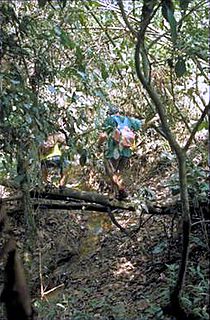 shoulders. Then we burst upon it. It was only a
small ravine, a twenty-foot drop to a rocky bottom, where, in the
wet season the tiny stream would swell into a fast flowing angry
river. The streamlet travelled between large sharp rocks and
seemed to be willing me to fall.
shoulders. Then we burst upon it. It was only a
small ravine, a twenty-foot drop to a rocky bottom, where, in the
wet season the tiny stream would swell into a fast flowing angry
river. The streamlet travelled between large sharp rocks and
seemed to be willing me to fall.
The bridge across this dangerous gap was a dripping wet tree trunk about 16 inches in diameter and 35 foot long. I had camera gear as well as my overweight body to haul across to the other side, preferably without anything too disastrous happening either to my equipment or myself! I paused and thought, “It could all end in tears before our adventure has really begun.” Adam and I had finally reached the Amazon rain forest and were following the Yawanawa guides along what, to me, seemed a non-existent trail. We brushed aside all sorts of hanging vegetation that criss-crossed in front of us.
I jammed my 'Tilley' hat hard on my head, trying to avoid the sharp Boca (that looks like bamboo but unlike the giant bamboo, has small, sharp, vicious thorns) from piercing any part of my face. The heat and humidity was making the sweat pour out of me like tiny rivers which ran all over my body, soaking me from head to toe. This trip was hard, tough and very different from anything I had imagined whilst planning my journey back in the calm of Kensington. “So isn't this what you so wanted?” I said to myself. “If you don't like it, it's too bloody late. Stop daydreaming: and cross that ravine.” When, finally and thankfully, I reached the other side, I stopped to take a breather – and said to myself, “Are you sure you haven't bitten off more than you can chew?”
Adam Baines and I first met in the Globetrotters Club. He had
just cycled around Vietnam and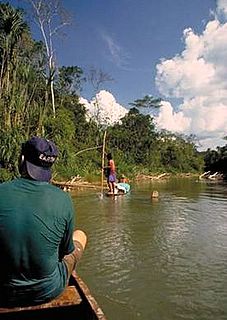 I was not long back from doing the same in New
Zealand. He had heard that I was planning a journey to somewhere
in the back of beyond of the Amazon Basin and as we both like
living on the edge, so we teamed up, thinking “what the
hell, let's do it.” Adam was thirty something, fit, and
spoke fluent Spanish; I was fifty something, not so fit and spoke
fluent Portuguese.
I was not long back from doing the same in New
Zealand. He had heard that I was planning a journey to somewhere
in the back of beyond of the Amazon Basin and as we both like
living on the edge, so we teamed up, thinking “what the
hell, let's do it.” Adam was thirty something, fit, and
spoke fluent Spanish; I was fifty something, not so fit and spoke
fluent Portuguese.
This was not only the story of a tribe's phoenix like renaissance, but was also the tale of two independent travellers' great adventure way down the Rio Gregoria near the borders of Brazil and Peru. 'Yawanawa' – 21st Century Warriors' was a taste of where we've been, what we have done and what's been done to us, what we enjoyed what we didn't, did it all turned out cool or did it all end up pear shaped? Like the films used to say – it all started back in the summer, when – – –
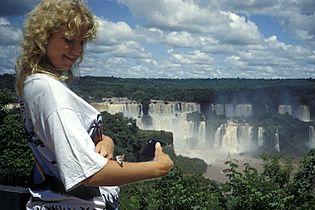 So Adam and I went off
into the depths of the green rainforest and our story of
frustrations and successes have been written down and seen in
various articles, slide shows, for the Globetrotters Club and
others. To this day we are still good friends having survived the
'Urban Jungle' as well as the 'Amazon jungle'.
So Adam and I went off
into the depths of the green rainforest and our story of
frustrations and successes have been written down and seen in
various articles, slide shows, for the Globetrotters Club and
others. To this day we are still good friends having survived the
'Urban Jungle' as well as the 'Amazon jungle'.
A lovely lady had introduced me to the GT Club around seventeen years ago and awakened my interest not only in her lovely self but also to adventure travel around the world. We saw where the Amazon met the sea in Marajo in the north and travelled south to those magnificent falls at Foz do Iquacu as well venturing into Africa. A wonderful adventurous person, the type one could only encounter at our club.
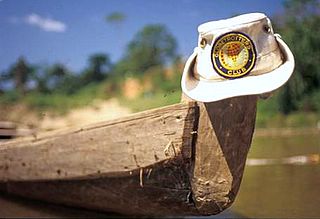 I have met and I'm sure I will still meet
some wonderful and life long friends in my time at the
Globetrotters Club. So thanks to them, some good nights in the
pub with Dick and with the members – Good conversation after the
'Slide Talks' have finished – My independent travelling
days are not yet over, with the help of all my vitamins, I will
continue to roll around this exciting world, either with or
without a travelling companion from our great Globetrotters Club.
I have met and I'm sure I will still meet
some wonderful and life long friends in my time at the
Globetrotters Club. So thanks to them, some good nights in the
pub with Dick and with the members – Good conversation after the
'Slide Talks' have finished – My independent travelling
days are not yet over, with the help of all my vitamins, I will
continue to roll around this exciting world, either with or
without a travelling companion from our great Globetrotters Club.
About the author Tony Annis: Have camera will travel. Over the top but not yet over the hill. Past sixty five and still alive, my get up and go has not entirely got up and gone – like good whisky, I'm still going strong. Travelling through these global villages of ours is great adventure but to me it is the people that make this wonderful world, as well as the exotic places that I love to visit. See you over the next horizon, Tony.
Getting Great Photo Prints From Your Digital Camera by Bob Stephens
The first step to getting great digital photo prints is to make sure you use a good quality digital camera. Digital photos are gaining popularity over traditional film photos because of the features and convenience associated with the newer technology. In some cases it’s even more cost effective to print your own photos at home instead of taking them to a developer or sending them in.
Here are some words of wisdom for making great digital photo prints at home.
There are really 4 key components to a great printed photo: Image, Printer, Ink, and Paper. Each is part interrelated therefore equally important for success.
The image is the starting point for a good photo. There are many different camera models out there, but in general, you will need at least 3.2 mega pixel picture taking ability. Some snazzy digital SLR cameras have 8 mega pixels or more. The camera should always be set to the highest resolution while taking the shots just in case you want to make enlargements later on.
Image transfer is crucial! Do not just throw the highest pixel image at some paper, you may not be happy with the results. Sometimes, too high of a pixel count will create unsightly jagged colour transitions in your photo and waste a lot of your ink and time. Too few pixels and the photos will turn out very “grainy”. It’s usually best to stay within the 200-300 pixels per inch range.
This chart may help you determine your appropriate photo sizes.
| Print Size | Good Results (200 ppi) | Excellent Results (300 ppi) |
| 4×6 inch | 800 by 1200 px (~1 mpx) | 1200 by 1800 px (~2 mpx) |
| 5×7 inch | 1000 by 1400 px (~1.5 mpx) | 1500 by 2100 px (~3 mpx) |
| 8×10 inch | 1600 by 2000 px (~3 mpx) | 2400 by 3000 px (~7 mpx) |
| 11×14 inch | 2200 by 2800 px (~6 mpx) | 3300 by 4200 px (~14 mpx) |
| 16×20 inch | 3200 by 4000 px (~13 mpx) | 4800 by 6000 px (~29 mpx |
Legend
- px = Pixels
- mpx = Mega pixels
- ppi = Pixels per inch
(data compiled from PCWorld.com)
For example, if you had a picture taken with a 1.5 Mega pixel digital camera, a 5×7 inch print is probably the largest size print that would work. Anything larger than a 5×7, may not look good. However, if you had a picture taken with a 14 Mega pixel camera, you should be able to print out an 11×14 inch print with excellent results (300ppi), or a “good” looking 16×20 inch print at 200 ppi.In addition to the digital camera image, there are a few other components that go into making good quality digital photos you’ll want to be aware of: Your printer, the ink cartridges you use, and the quality of the photo paper you use. Each component factors into your end result.
Bob Stephens is director of operations for ASAP Inkjets. ASAP Inkjets offers ink cartridges & toner at up to 80% below retail. Sign-up for their free newsletter for tips & discounts at: http://www.asapinkjets.com/ or email: subscribe@asapinkjets.com
The Beetle Goes Diving in the Similan Islands
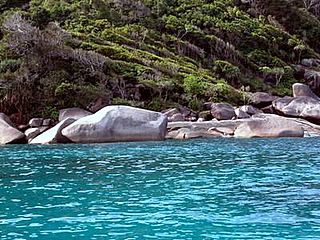 The Similan Islands can be found about one hundred kilometres northwest of Phuket, Thailand. They comprise nine granite islands covered in tropical jungle. The word Similan is said to be given by Malay fisherman who named it “The Nine Islands” (Sembilan is “nine” in Malay) and now the islands are identified by a Thai name and a number, for example, Ko Huyong (Island #1), located at the southern end of the chain or Ko Miang (Island #4) located in the middle. The Similan Islands are national parks and there is limited accommodation on them.
The Similan Islands can be found about one hundred kilometres northwest of Phuket, Thailand. They comprise nine granite islands covered in tropical jungle. The word Similan is said to be given by Malay fisherman who named it “The Nine Islands” (Sembilan is “nine” in Malay) and now the islands are identified by a Thai name and a number, for example, Ko Huyong (Island #1), located at the southern end of the chain or Ko Miang (Island #4) located in the middle. The Similan Islands are national parks and there is limited accommodation on them.
The Beetle has always been attracted to the idea of diving in the Similan Islands, and they are reckoned to be the second best dive site in SE Asia, after Sipadan. It is not possible to stay on the Similans and dive, so the usual arrangement is to stay on a liveaboard. These are not cheap and range from US $300 and upwards for 3 nights stay. Generally speaking with liveaboards, you get what you pay for, so the more you pay, generally, the better living accommodation you have, nicer food and so on. 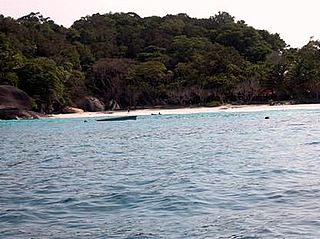
This was not to be my case as I soon discovered. First, I was told that I would not be sharing my cabin with a male, and that the cabins had bunk beds on top of each other. What actually happened is that I shared my cabin with a young Canadian guy who was very nice, and the beds were about two feet apart and not bunk beds at all. Next I discovered that the boat was in fact over booked and that there was one dive passenger too many on board. There was a jumble around with the mostly male group and someone slept with the three dive masters in what can best be described as a hole under the bow, though in the end, there was a fight to sleep on top of the boat because it was so hot and damned uncomfortable. Except it rained and then there was a fight to get back down again. The food was okay, but we started to run out of food, especially items such as milk after two days. I started to feel a little bit ripped off, I’d paid a lot of money – US $600 which I couldn’t really afford, but did so because I felt it was a once in a lifetime chance, and that I was in Thailand, why not, but I came away feeling that it was extremely poor value for money and the diving wasn’t actually that good, and I would not repeat the experience.
 There were 15 of us and three dive guides. Usually, you are put into groups according to experience, but this did not happen here, so we had mixed ability groups, and then I discovered that of the 15 people, 5 people were novices and had only just completed their PADI open water course, which seemed incredibly mean for them – the Similans is not easy diving, strong currents and deep. The problem with being in mixed groups is that in these conditions, you usually have to surface when the first person is low on air and needs to come up to the surface, and in this case, this was sometimes after 20 minutes. Not ideal. Having said this, the beginner divers coped extremely well with the difficult conditions, far better than I would have at their level. It wasn’t their fault, they’d just been ill advised to go to the Similan Islands. There was one couple who didn’t mix much with the rest of the group, who between them had a couple of hundred dives. It seemed to be their mission to destroy as much sea life as possible on each and every dive. Between them, they seemed to flatten and break any hard corals that came in their way. Night dives were the worst times to witness this mass destruction. The dive guides said and did nothing about this blatant lack of consideration, and bad dive manners. None of us wanted to dive with them, and after a while they were allowed to go off and do their own thing as they were also avid photographers and were usually far behind the rest of the group anyway.
There were 15 of us and three dive guides. Usually, you are put into groups according to experience, but this did not happen here, so we had mixed ability groups, and then I discovered that of the 15 people, 5 people were novices and had only just completed their PADI open water course, which seemed incredibly mean for them – the Similans is not easy diving, strong currents and deep. The problem with being in mixed groups is that in these conditions, you usually have to surface when the first person is low on air and needs to come up to the surface, and in this case, this was sometimes after 20 minutes. Not ideal. Having said this, the beginner divers coped extremely well with the difficult conditions, far better than I would have at their level. It wasn’t their fault, they’d just been ill advised to go to the Similan Islands. There was one couple who didn’t mix much with the rest of the group, who between them had a couple of hundred dives. It seemed to be their mission to destroy as much sea life as possible on each and every dive. Between them, they seemed to flatten and break any hard corals that came in their way. Night dives were the worst times to witness this mass destruction. The dive guides said and did nothing about this blatant lack of consideration, and bad dive manners. None of us wanted to dive with them, and after a while they were allowed to go off and do their own thing as they were also avid photographers and were usually far behind the rest of the group anyway. 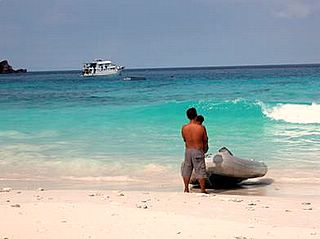
Night dives were a complete fiasco. The first two sets of night dives were taken by just two of the dive masters, so picture this, 15 divers and 2 dive masters and a whole bunch of inadequate torches. They bumped, jostled, elbowed, finned each other in the face, the back, leg, you name it. It was horrible and unpleasant and if someone saw, as happened, a turtle, then everyone swooped on it and shone their feeble torches in its eyes. On the last night dive, there was only one dive master for the group as the other was ill. Each of the dive masters was very nice and interesting to talk to, and I should say that they were all safe, but it became increasingly clear that they did not get on and that this was the first time they’d all worked together. The crew were pretty lazy. They would help you if they were being watched, but if there was no-one around, they’d just sit and watch you.
What was it like? Disappointing, in a word. Very quiet, not huge amounts of aquatic life, certainly no leopard sharks which are supposed to be common there (the picture is of a leopard shark at Sipadan, about 3m long but totally harmless). 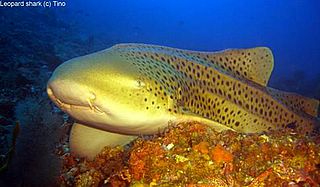 Strong currents in places, a lot of surge in others, and in one case, 3m visibility. I’d done a couple of dives around the Phi Phi islands on a cattle boat (i.e. 45 divers), which whilst the visibility was not that great, the diving was far superior to all but two of the dives I did on the Similan Islands. Something was wrong, seriously wrong, it should not have been like this.
Strong currents in places, a lot of surge in others, and in one case, 3m visibility. I’d done a couple of dives around the Phi Phi islands on a cattle boat (i.e. 45 divers), which whilst the visibility was not that great, the diving was far superior to all but two of the dives I did on the Similan Islands. Something was wrong, seriously wrong, it should not have been like this.
At first, I thought it was me, that maybe I had hyped the Similans up too much in my mind, especially having dived in Sipadan just two weeks earlier which was in every way far, far better than the Similans. No, I am an experienced diver, I don’t think it was a case of expecting too much, but it just didn’t hang together.
When I got back to Bangkok, I put a message on the dive board of the Lonely Planet Thorn Tree (an excellent resource) about my experience asking if other people had had a similar time. Slowly, slowly, the replies came in: who did I go with? Which sites did we dive and so on. Eventually, with input from dive instructors based in Phuket and other dissatisfied customers I pieced together what had 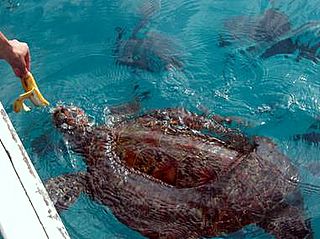 really happened. It seems to be like this: the owner of the boat is greedy, he pays the crew including the dive masters very little, but is good at marketing. The three dive masters had never worked together before and were relatively new to the Similans and one is well known for not looking after their charges. Theï¿Â½dive sites we visited were largely not the best for diving, but more convenient for the sailing schedule. I am not pleased that given the money I paid that we didn’t even tick off some of the best sites, we just didn’t. A classic flog it and ignore the complaints scenario.
really happened. It seems to be like this: the owner of the boat is greedy, he pays the crew including the dive masters very little, but is good at marketing. The three dive masters had never worked together before and were relatively new to the Similans and one is well known for not looking after their charges. Theï¿Â½dive sites we visited were largely not the best for diving, but more convenient for the sailing schedule. I am not pleased that given the money I paid that we didn’t even tick off some of the best sites, we just didn’t. A classic flog it and ignore the complaints scenario.
So what did I learn, and what is the motto of the story? It wasn’t all a disaster. Getting wet, i.e. any kind of diving is usually good, and there were two excellent dive sites we visited, but the rest, the remaining 12 were distinctly lack lustre, considering the Similan Island’s reputation – and the night dives were appalling. I went right at the start of the season, and this was the boat’s first trip of the season (old boat, new season). Maybe I should have waited until later in the season when operations became smoother. I’d recommend asking around, getting personal recommendations by people who have made the trip. Ask the right questions, like how many divers per dive guide? Are the groups segregated by experience? Which sites do you go to?
If anyone has had any good experiences of the Similans, I’d love to hear from them.
Survey Corner: Popular Travel Spots for Americans
Carlson Wagonlit Travel Associates unveiled the 2006 results of their annual Travel Trends Survey resulting from a poll of 363 of their travel associate owners, managers and front-line agents throughout the United States at the end of 2005.
Las Vegas remains top of domestic US destinations and Caribbean cruising continues to be the hottest international option for travellers. Caribbean cruising was followed by the Riviera Maya in Mexico with 51.2 per cent while Cancun in Mexico was third with 49.3 per cent. Jamaica was ranked 4th and Puerto Vallarta made a leap into the top five from its 12th position in 2005. The surge in travel to Puerto Vallarta and the western coast of Mexico has been attributed to the aftermath of Hurricane Wilma.
- Top 10 Domestic (US) Destinations: 2006
- 1. Las Vegas, NV 79.6%
- 2. Orlando, FL 71.3%
- 3. Maui, HI 58.1%
- 4. Honolulu, HI 57.9%
- 5. New York City, NY 40.8%
- 6 (tie). Anchorage, AK 19%
- 6 (tie). Phoenix/Scottsdale, AZ 19%
- 8. Kauai, HI 16.3%
- 9. Fort Myers, FL 16.0%
- 10. San Francisco, CA 12.7%
- Top 10 International Destinations: 2006
- 1. Caribbean Cruising 76.3%
- 2. Riviera Maya, Mexico 51.2%
- 3. Cancun, Mexico 49.3%
- 4. Jamaica 34.7%
- 5. Puerto Vallarta, Mexico 30.6%
- 6. Rome, Italy 25.6%
- 7. London, United Kingdom 23.4%
- 8. Punta Cana, D. Republic 22.6%
- 9. Cruising Mexico 19.0%
- 10. Cabo San Lucas/Los Cabos, Mexico 16.5%
- Top 5 Cruise Destinations: 2006
- 1. Caribbean (Western) 30.6%
- 2. Alaska 24.8%
- 3. Caribbean (Eastern) 20.1%
- 4. Caribbean (Southern) 8.8%
- 5. Mexican Riviera 5.8%
Who Can Travel Where?
According to a new study by Zurich-based firm private client and business advisors Henley & Partners AG, citizens of Denmark, Finland and the United States have the greatest freedom to travel without needing visas. The study team found that Danes, Finns and Americans can travel to 130 countries or territories without a visa. Next are citizens of Germany, Ireland and Sweden whose citizens can visit 129 countries without a visa, then Britain, France, Italy and Japan (128). Canada tied with Austria, Luxembourg and New Zealand in 16th place on the list where citizens of these countries can visit 125 states without a visa.
Who came last? IN other words, citizens of which country require the most visas to travel? Afghanistan came in last place, with its citizens allowed free travel to just 12 countries. Iran was next at 14, followed by Iraq, Myanmar and Somalia at 15.
Google Gives In To China
Yes, it’s a dammed nuisance when travelling in China not to be able to find an internet café. Now, you should be able to find more, but at a price.
Google, the world’s largest search engine will now be offering Google services to China’s 110 million online users. Google is the latest internet company, after Yahoo and Microsoft to go to China. Critics say that this move will effectively help the China government to block websites and access to information with politically sensitive comments that the government does not approve of.
According to one internet media insider, the main taboos are the three Ts: Tibet, Taiwan and the Tiananmen massacre, and the two Cs: cults such as Falun Gong (type “Falun Gong” in the search engine from a Beijing computer and the only results that can be accessed are official condemnations), and criticism of the Communist party, though this list is frequently updated. The China government has developed sophisticated filters have been developed to block or limit access to “unhealthy information”, which includes human rights websites, such as Amnesty, foreign news outlets, such as the BBC, references to the Tiananmen Square massacre, criticism of the politburo as well as pornography. Of the 64 internet dissidents in prison worldwide, 54 are from China.
Google, along with Yahoo and Microsoft face sever criticism from free speech advocates, internet activists and politicians, some of whom are already asking how the company’s policy in China accords with its mission statement: to make all possible information available to everyone who has a computer or mobile phone. Julian Pain of Reporters Without Borders – a group that also has its website blocked in China – accused Google of hypocrisy. “This is very bad news for the internet in China. Google were the only ones who held out. So the Chinese government had to block information themselves. But now Google will do it for them,” he said. “They have two standards. One for the US, where they resist government demands for personal information, and one for China, where they are helping the authorities block thousands of websites.”
Mac's Travel Reminiscences
 Mac has not been very well, but is still e-mailing strong. In this edition of the Globetrotter e-newsletter, Mac sympathises with the Beetle for being given a hard time in Sydney and talks about some of his time in Japan whilst based there shortly after WW2.
Mac has not been very well, but is still e-mailing strong. In this edition of the Globetrotter e-newsletter, Mac sympathises with the Beetle for being given a hard time in Sydney and talks about some of his time in Japan whilst based there shortly after WW2.
A few years back I took a train to Montréal. The train on this route only went to the border and you had to get on a bus to go thorough Canadian customs and the rest of the way to Montréal. I was the oldest person on bus full of hippies. Some looked like terrorists. None of them were detained except me who was called aside into a room and questioned. I always carry not an excessive amount but enough travellers’ checks in case I get sick and have to come back by air. I had declared this on customs form. They kept asking me why I was taking so many travellers checks into Canada. I said To spend in Canada and also to have in case I need to fly back etc. I was polite and maybe even bowed although I was not in China now and I tried to be gracious but I was annoyed that I was selected for grilling although I showed them all kinds of ID, passport, military retired card, McDonalds hamburger card etc. I too got suspicious looks from fellow passengers who had been delayed because of me. I wrote the Canadian Tourist Bureau telling them I was curious as to why I had been selected for the grilling but got no answer. I have not been back to Canada since but not because of this slight inconvenience (or maybe subconsciously it has played a part.) Montreal is one of the most interesting cities in the world so I should try it again and this time I will try to look like a hippie terrorist that can hardly speak English.
If I had my life to live over I would do even more travelling than I have. I have never regretted any trips I took and relive them when looking over my travel and journal notes. I seem to have taken down more notes in Japan where I was stationed for five and one half years than anywhere else. Here are some notes from my odd travel and journals.
A German diplomat in Japan tells me that Wilfred (my name) is a German name and means “I want peace” or “I want a piece.”
Off to a bad start this morning. Someone dropped the Majors’ suitcase all the way from the plane door to the cement runway. This prompted one of the guys to say “There will be turbulence this morning.” (Weather squadron.)
I arrived in Hong Kong dirty and tired and found we could not have water in hotel except between seven and seven thirty at night as they still have water shortages. Lt Culler could not wear his orange flight suit into Bangkok as it is the same colour as the Buddhist robes. (If he had a bowl maybe he could have gotten some food offerings. Ha.)
Capt S’s little three year old boy (his wife is Swedish) goes to a Japanese school. They want him to learn Japanese, (the family has gone all out Japanese). The wife is learning Japanese dancing and she is a tall woman who even when dressed in kimono and Japanese wig etc still does not look Japanese. Sgt K in our outfit is kept busy writing notes in Japanese back and forth to the Japanese teacher – how do I say I want to go to the toilet? Say Benjo which is Japanese word for toilet. Does not apply to song I have a banjo on my knee.
The Japanese are so polite. I have in my notes a Japanese word that means Thank you for insulting me. The Japanese girl at the travel bureau phoning for reservations for me used the following phonetic system to spell my name. M Mike, C China, c Small China, A American, R Room, T Tokyo, Y Yamagata: McCarty.
The Japanese nuns teaching American community had a bazaar to raise money. Each foreign Embassy had a booth. The Columbia one had a sign “Cleopatra and Mark Anthony went for coffee. Romeo and Juliet went for coffee. Now lets all go for coffee”. I asked one of the nuns if she was going to buy one of the $100 high style dresses donated to the bazaar. (I am always hard up for conversation) She with a grin Oh yes, two of them. Not for myself of course.
They had a little farewell party for the Chaplains wife (Protestant) who is returning to the States. A Japanese employee wrote a farewell poem to her in tribute in Japanese They asked another Japanese to translate the tribute. She read “Homeward the old goose goes.” The wife laughed the hardest of all.
Nov 10 was the Shiri-taume festival or pinching buttocks festival at Atenashi Shrine kin Usami, Ite Shizucka Prefecture. Sunday I was at Wedding Centre, Nihaenkaku. 1760 couples were married in two months, Oct and Nov being the months for weddings. On one day alone, 145 couples were married – this was before Rev Moon in Korea started mass weddings. The reason why so many people get married on same day is that they are lucky days. There are also unlucky days to get married, some claim they are all unlucky days.
At the Miyako Hotel in Kyoto they have a “right away” button for urgent service. They also have another button to be used for routine service. In our mess hall at Hickam, they seem to have stew every day but under different names.
If you would like to get in touch with Mac, he is happy to correspond by e-mail when he is well. His e-mail address is: macsan400@yahoo.com
Our Friends Ryanair
The French Transport Ministry has instructed its civil aviation authority to discuss the security practices of the low-cost airline Ryanair with regulators in Ireland and Britain. The ministry issued a statement after the broadcasting of a television documentary in Britain in January 2006 that alleged that security practices were occasionally flouted by the Ireland-based airline.
The documentary, screened by Channel 4 in the UK alleged that passport checks before boarding were not carried out properly, trainee employees were not given necessary training and planes were not cleaned adequately between flights.
Being Careful: Nepal
The British Foreign and Commonwealth Office advise against all but essential travel to Nepal. The political situation in Nepal remains tense and unpredictable following the end of the Maoist ceasefire and elections, which took place on 8 February 2006.
There is a possibility of further violence and disturbances with planned blockades in Kathmandu and other regional centres from 14 March 2006 onwards, and an indefinite nationwide bandh (shutdown) from 3 April 2006 onwards. Both of these events are likely to cause significant disruption. We advise you to take extreme caution if travelling in Nepal during this period.
There has been an escalation of Maoist violence throughout Nepal since they ended their unilateral ceasefire on 2 January 2006. Since then they have carried out a series of bombings and armed attacks on security forces and Government targets across Nepal.
On 1 March 2006, Maoist attacks in Palpa (south west of Pokhara) killed approximately 11 security personnel. On the same day in Palpa, one civilian was killed during a RNA air attack and another killed by a stray RNA bomb.
Mobile phone networks are partially operating, though pre-paid mobile phone services are still disrupted. Land-lines are working at present.
Countrywide and local bandhs are regularly called and have caused widespread disruption including to transport. You should avoid road travel during nationwide bandhs. Bandhs and political demonstrations can flare up quickly and with little warning and may turn violent, as they did several times in 2005, and most recently in February 2006. You are strongly advised to avoid demonstrations and large gatherings of people.
The majority of problems encountered by British tourists in Nepal are trekking accidents and drug-related incidents. If you travel to Nepal, you should use a reputable travel agent and only trek with an experienced guide and in a group. If you plan to travel to out-of-the way areas, please contact the British Embassy in Kathmandu on arrival for latest advice on the security situation in the area.
Globetrotters Travel Award
A member of Globetrotters Club? Interested in a £1,000 travel award?
Know someone who is? We have £1,000 to award each year for five years for the best submitted independent travel plan. Interested?
Then see our legacy page on our Website, where you can apply with your plans for a totally independent travel trip and we’ll take a look at it. Get those plans in!!
